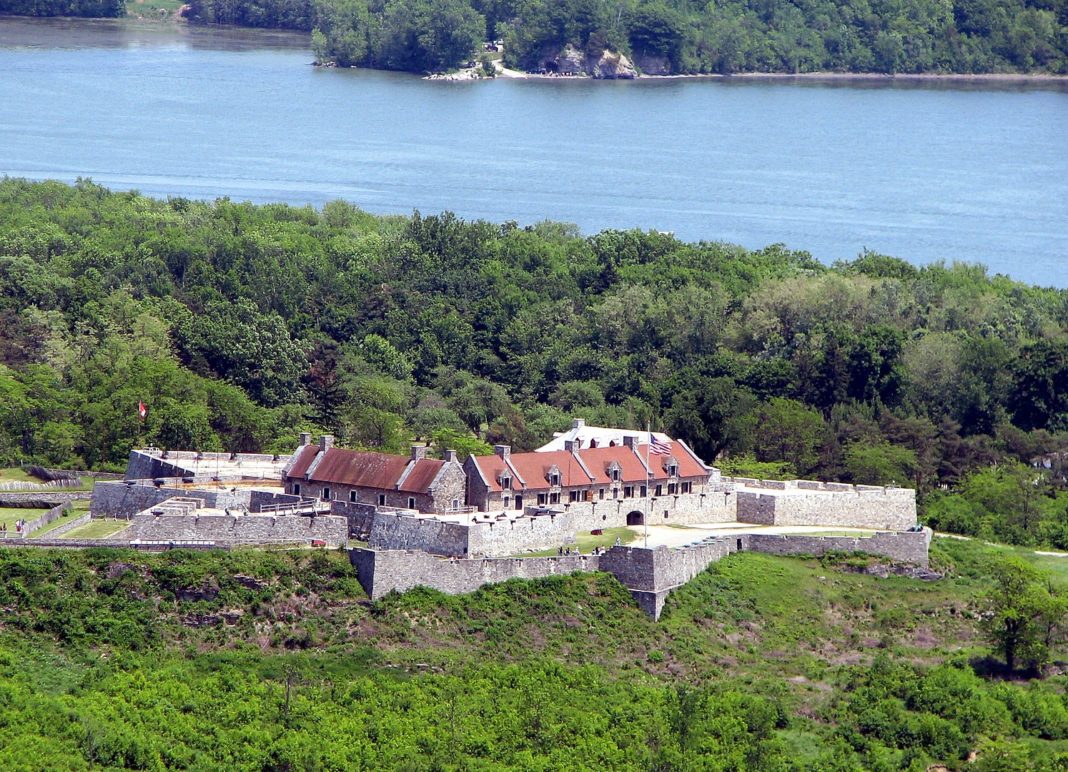
In the spring of 1775, a small band of American soldiers set out for the shore of Lake Champlain, recruiting others to their expedition along the way and ultimately joining forces with Ethan Allen and his legendary Green Mountain Boys. Together, they launched a daring surprise attack on the massive British outpost: Fort Ticonderoga.
It’s an amazing story that’s often styled as the Revolutionary War’s “first American victory.” But it’s also a story of British incompetence — of a disinterested and distracted government not taking the steps to respond to an inevitable disaster.
Missed Warnings
As early as 1767, Guy Carleton, the British governor of Quebec, had said that it was “indispensably necessary” to keep the region’s lake posts in repair. But over the year,s upstate New York had been relatively quiet. Across the lake, in the Grants, there was only the “Bennington Mob,” and they were small, not necessarily against the Crown, and located eighty miles away.
Elsewhere, in places like Massachusetts, the situation was getting so tense that on May 2, 1774, Frederick Haldimand, a British military leader, demanded that his aides examine the state of the forts at Crown Point and Ticonderoga. On May 13, the report arrived: “Fort at Ticonderoga is in ruinous situation . . . in many places there are very capital breachers.” The report failed to mention that, from a military point of view, the cannons packed with grapeshot were lined up in such a way that they could not repel a ground attack from a small force.
Two days later, on May 15, Haldimand wrote to England and proposed moving two loyal regiments from Canada to Crown Point, for “rebuilding that fort which from its situation not only secures the communication with Canada but also opens easy access to the back settlements of the Northern colonies and may keep them in awe.” Apparently, Haldimand’s superiors did not see any merit in this idea. Certainly, they did not act with speed.
“As Little Expense As Possible”
Later that year, as tensions escalated, there were many instances of the colonists trying to acquire arms. In October, another British commander noted that he was “fully sensible of the bad state of the buildings at Ticonderoga.” He ordered “some small repairs,” but “at as little expense as possible.”
On November 2, England finally sent orders to put the forts “in such a state as may effectually answer the purposes for which they were originally intended.” By the time the letter finally arrived in America, in December, winter had set in, and all action had to wait.
It should have been increasingly clear that the colonists were getting desperate for arms. In the spring of 1775, Carleton received another demand to reinforce Crown Point — but it did not even mention Fort Ticonderoga. There was no sense of urgency to improve the defenses for this remote upstate New York fort, even with its appetizing prize of more than one hundred cannons.
The Battle
The rest, of course, is history. On May 10, 1775, less than a month after the battles at Lexington and Concord, Ethan Allen and his fellow Americans surprised the fort, capturing it and its weaponry. Those British cannons were eventually sent to Boston, where they helped the colonial army’s successful siege. Meanwhile, the loss of the fort made it much harder for Britain to coordinate its Canadian forces.
It was a wonderful victory for America. But it was also an embarrassing loss for Britain — the latest international example of what happens when a government plan for serious threats, though it would hardly be the last.

